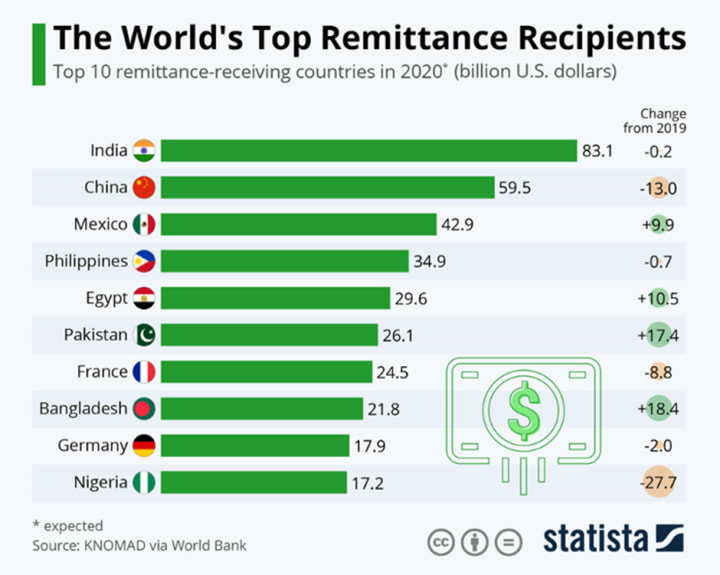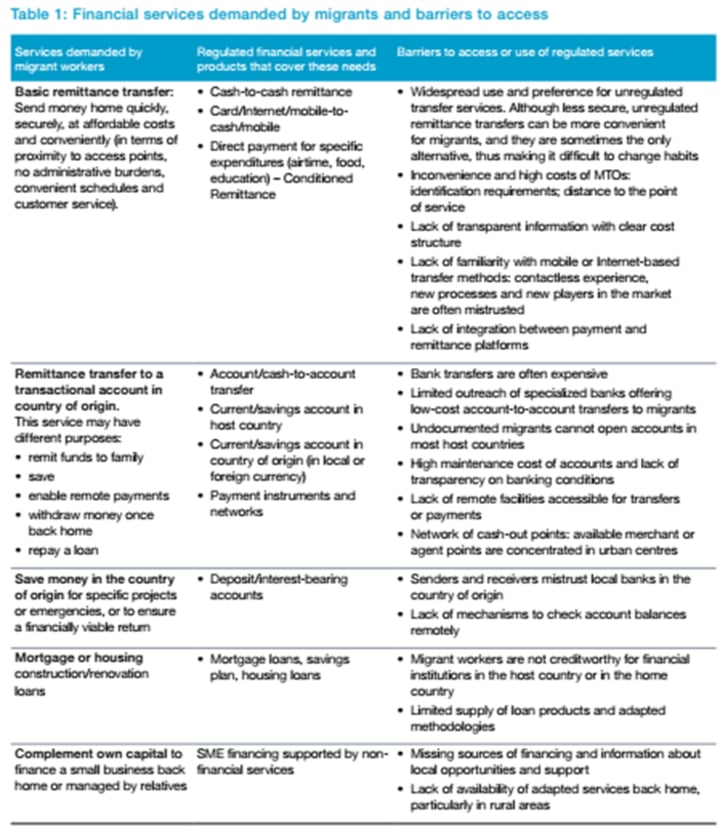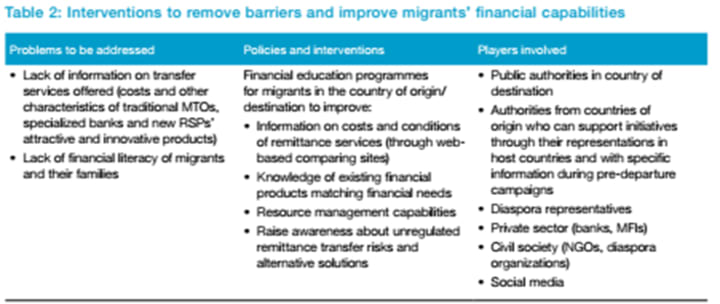The Importance of Remittances: Governments and Financial Institutions should be doing more.
Without remittances many people around the world will starve, many will go without life- saving healthcare, many more will miss out on education and on personal achievement of their SDGs. Remittances pay for these things in many developing countries and indeed they are a livelihood for a billion people in the world. The financial institutions and advance country government should be doing more to ease remittances, for a better world if they indeed wish all people out of poverty.

Migrant workers deserve commendation for the sacrifices they make, sending upto 15% of their income to their families and friends, helping them to achieve a better life and reducing global poverty, I will argue that remittances have more impacts on the livelihood outcomes of more people, than all the humanitarian agencies and government aids bandied around.
Sadly governments, institutions and all sort of middlemen form barriers to remittances, from high financial rates, documentation requirement hurdles to outright theft by third parties and agents further the lives of the make them pay even more.
June 16, The International Day of Family Remittances(IDFR)
Remittances are so important that they get their own day of recognition, if you don’t live in a developing country this may just be impossible for you to imagine, I simply cannot communicate how important it is, as my people will say “if you know, you know” nevertheless let me use past literature to try to capture the reasons why remittances are so important, for this I turn to the International Fund for Agriculture Development(IFAD) article, titled “11 reasons why remittances are important” published 14, June 2021, some of which I have listed below.
No. 1, 2, 3, 4 & 5 tells us how critically important remittances are to millions of lives, no-6 tells us technology plays a major role in life saving, and no-7 tells us it is still way too expensive for recipients of remittances, no 6 & 7 in particular shows the importance for the need for financial institutions to do more.
1. A staggering one billion people, or one in seven in the world, are involved with remittances, either by sending (200 million migrant workers) or receiving them (an average household of four people). One in seven people in the world – around 800 million in total – benefits from these flows.
2. Migrant workers send on average US$200 or US$300 home every one or two months… What they send can make up as much as 60 per cent of a household’s total income and represents a lifeline for millions of families.

3. Over 50 per cent of remittances are sent to households in rural areas, where 75 per cent of the world's poor and food-insecure live. Rural households rely on these flows for improving their livelihoods, increasing their resilience, and achieving their own SDGs.
4. About 75 per cent of remittances are used to put food on the table and cover medical expenses, school fees or housing expenses. In times of crisis, migrant workers may send more money home to cover loss of crops or family emergencies. About 25 per cent of remittances, representing over US$100 billion per year, can be either saved or invested in asset building or activities that generate income and jobs and transform economies, particularly in rural areas.
5. Migrants make an invaluable contribution to the Sustainable Development Goals through remittances and investments. In particular, they contribute to ending poverty (SDG 1) and promoting zero hunger (SDG 2), good health (SDG3), quality education (SDG 4), clean water and sanitation (SDG 6), decent work and economic growth (SDG 8) and reduced inequalities (SDG 10). Their contribution to development, through remittances and investments, has also been recognized in Objective 20 of the Global Compact on Safe, Orderly and Regular Migration, adopted by the United Nations General Assembly in December 2018.
6. One of the primary reasons attributed to continuous flow of formal remittances reaching the last mile is the adoption of digital technology by the migrant workers and their families. Digitalization, both online and mobile, proved a catalyst and an enabler of remittance flows. In particular, mobile remittances increased by 65 per cent, to US$1.2 billion, through the course of 2020 (GSMA, 2021).
7. Remittances can be costly to send. Currency conversions and fees cost, on global average, seven per cent of the amount sent. SDG 10.c aims to reduce transaction costs to less than three per cent by 2030. Technical innovations, particularly mobile technologies, digitalization and blockchain, can fundamentally transform the markets, coupled with a more conducive regulatory environment.
Even IFAD agrees Remittances are the largest poverty reduction programme in the world
According to IFAD - Remittances have been called the world’s largest poverty reduction programme. Amounting to as much as 40% of family income, remittances are mostly spent on basic necessities such as food, clothing and shelter; but once these are covered, the remainder is invested in human capital, health and education, or housing. Although referred to as a ‘non-productive’ use of assets, these funds are vital in lifting millions of families out of poverty.
The report further goes on to identify the services demanded by the migrants and the recipient as well as the barriers to these needed services


So here we are
1. We know what the migrants need to make the remittances
2. We know what the barriers and
3. We know the solutions already
4. So why are we all waiting,
The question is why is more not being done?
References
1. IFAD. The use of Remittances and Financial Inclusion. (2015). https://www.ifad.org/documents/38714170/40187309/gpfi.pdf/58ce7a06-7ec0-42e8-82dc-c069227edb79
2.
About the Creator
EA
Be humane always
Enjoyed the story? Support the Creator.
Subscribe for free to receive all their stories in your feed. You could also pledge your support or give them a one-off tip, letting them know you appreciate their work.






Comments
There are no comments for this story
Be the first to respond and start the conversation.